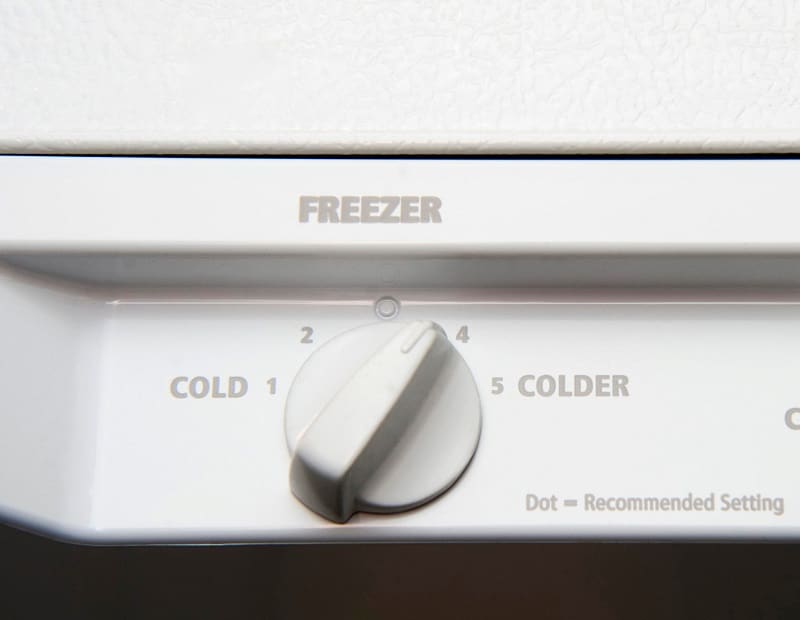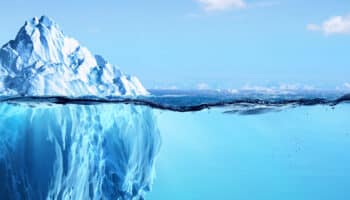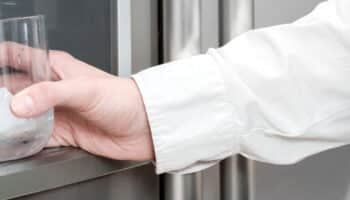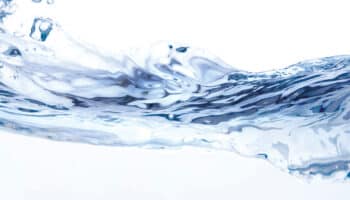We've independently reviewed this article to make sure it's as accurate as we can make it.
To find out more about our article creation and review process, check out our editorial guidelines.
Wondering why is your ice maker taking so long to make ice?
You’re not alone! Having ice maker issues on a busy night with friends over can be super annoying.
Luckily, you’ve come to the right place.
If your ice maker makes ice too slow, try lowering the freezing temperature, checking for blockages, changing the water filter, and inspecting the door seal. Switching off the ice maker and letting it defrost can also help it clear frozen blockages.
Read on to adjust the ice maker cycle time!
Why trust us? This article was written by Craig Anderson and Andy Fulenchek.
Craig has helped thousands of other homeowners repair their appliances since 2016.
Andy is one of our resident appliance repair experts with over a decade of experience. He currently runs his appliance repair company with a team of trusted technicians.
Fixing a Slow Ice Maker: 6 Simple Steps
In this section, I’ll guide you through the different reasons that can explain why your ice maker is taking so long to make ice and provide various solutions.
#1 Reduce the Temperature of the Freezer
I tend to find that when an ice maker is too slow, it’s typically due to high temperatures.
You see, in many refrigerators, ice makers get cold air from the freezer. So, if the freezer is too warm, the air supplied to the ice maker won’t be cold enough, resulting in slower ice formation.
Take a look at the thermostat in the freezer. If you want your ice cubes to freeze more quickly, you should set the right temperature.
I’ve seen that most ice makers will not function properly if the temperature is above 15F (-9C). Ideally, a freezer should be around 0F (-18C).

If your ice maker is separate from the freezer, its compartments should also be checked for the right temperature.
#2 Check the Door Seal to the Freezer
If you’re still struggling with a slow ice maker, there’s probably an air leak.
As mentioned above, you need the freezer to be set to the correct temperature if you want it to create ice cubes quickly. Unfortunately, if there is something wrong with the door seal, cold air could leak out of the freezer, affecting ice production.
Another sign of something wrong with the door seal is that your utility bills are going up.
Let’s take a look at the seal. If you notice any tears or cracks, I recommend replacing the gasket with a new one.
As part of a good maintenance routine, you can add a very light coating of Vaseline (petroleum jelly) to the surface of the gasket to keep it flexible and protect it from sticking/tearing over time.
#3 Clean the Freezer Thoroughly
If your ice maker is still slow, you must clean your freezer.
If there’s too much food in your freezer compartment, the cold air won’t be able to circulate as efficiently. As a result, the temperature can rise and slow down ice production.
If you remove food from the freezer, clean it thoroughly so there’s no gunk blocking the circulation.
You also need to pay close attention to the individual parts of the freezer. Ice cubes can be slow to come out of the ice maker because it is dirty. My usual advice is to use a water and vinegar solution to clean the ice maker thoroughly (or an alternative – just make sure it’s safe for consumption! It can leave behind residue which could touch ice cubes).

Ensure you wipe it down with a microfiber cloth afterward. Then, run a fresh batch of ice cubes after the cleaning process. Dump out the batch so your ice cubes do not have a funky aftertaste.
#4 Defrost The Ice Maker
In my experience, an ice maker’s slow speed could be due to frozen parts. So, defrosting the unit can help you solve the problem.
Keep in mind that defrosting the ice maker can be a bit of a hassle. If it’s attached to your fridge, you’ll need to empty it (or not have any easily perishable items). Then turn off the ice maker for around 12-24 hours until it’s been given enough time to thaw out fully. Make sure to leave the doors open to help.
You can speed up the defrost process by having a fan blowing warmer outside air toward the open refrigerator.
A good way to check is to leave some ice cubes there and wait until they fully turn into water.
#5 Install a New Water Filter
Now, let’s talk about your ice maker’s water filter. When was the last time you changed it?
If it’s been over six months since you last changed the water filter, it’s likely to become clogged. As a result, water will have a hard time flowing through the filter, slowing down ice production.
Changing the water filter should help you fix your slow ice maker. Keep in mind that you should replace the filter every six months.
If you want to get any replacement part – or see how much one would cost – click to enter your model number in the search bar below. Our partners at AppliancePartsPros stock almost every part with free guides on how to install them.

#6 Inspect the Thermostat
If you’ve tried all of the fixes above but you’re still struggling with a slow ice maker, you must inspect the thermostat.
The thermostat detects the temperature of the ice cube mold to determine when the ice cubes are fully frozen and ready to be released.
Unfortunately, if the thermostat malfunctions, it won’t accurately sense when the ice cubes are solid. As a result, it won’t regularly release the cubes, leading to slow ice production.
While thermostats can be replaced, I think, in many cases, it’s more cost-effective to replace the entire ice maker.
FAQs About Slow Ice Makers
It can be frustrating to deal with an ice maker that is too slow. Fortunately, there are ways for you to deal with this issue. A few common questions people have about a slow ice maker include:
How often do I need to clean my ice maker?
It depends on how often you use it. Monitor the quality of the cubes for any debris. Older ice maker mold’s Teflon coating usually begins to flake off due to age. Obviously, we don’t want Teflon in our drinking water, so you’ll need a new ice maker when this type of damage is found.
You should also replace the water filter every six months. If you do not clean your water filter and ice maker regularly, it will impact your freezer’s ability to produce ice cubes quickly.
Is there a way for me to force my ice maker to cycle?
Many ice makers have a reset or test button on the ice maker itself that you can use to do a test cycle.
You can also force the ice maker to cycle by opening the freezer door and removing the ice bin from underneath the ice maker. Empty the ice from the bin, and toggle the ice maker switch to the On setting to force the ice maker to make a clean batch of ice cubes.
How can I increase the rate of water flow to my ice maker?
If you want to increase the water flow rate to the ice maker, you should change the water filter, so you know there will not be any blockage between the water source and the ice maker itself.
You can use a Phillips head or a flat-head screwdriver to change the water level in the ice maker. If you increase it, you should force water to flow to the ice maker more quickly.
Wrapping Up: Your Guide to Faster Ice Production
Hopefully, now you know how to fix your ice maker’s slow ice production.
Remember to check the temperature, inspect the door gaskets, clean your freezer, and defrost the ice maker to speed up ice production. Don’t forget to install a new water filter every six months and replace the ice maker if the thermostat is faulty.
Thank you so much for reading! Please check out our other free guides if you found this article helpful.
Have a great day.







